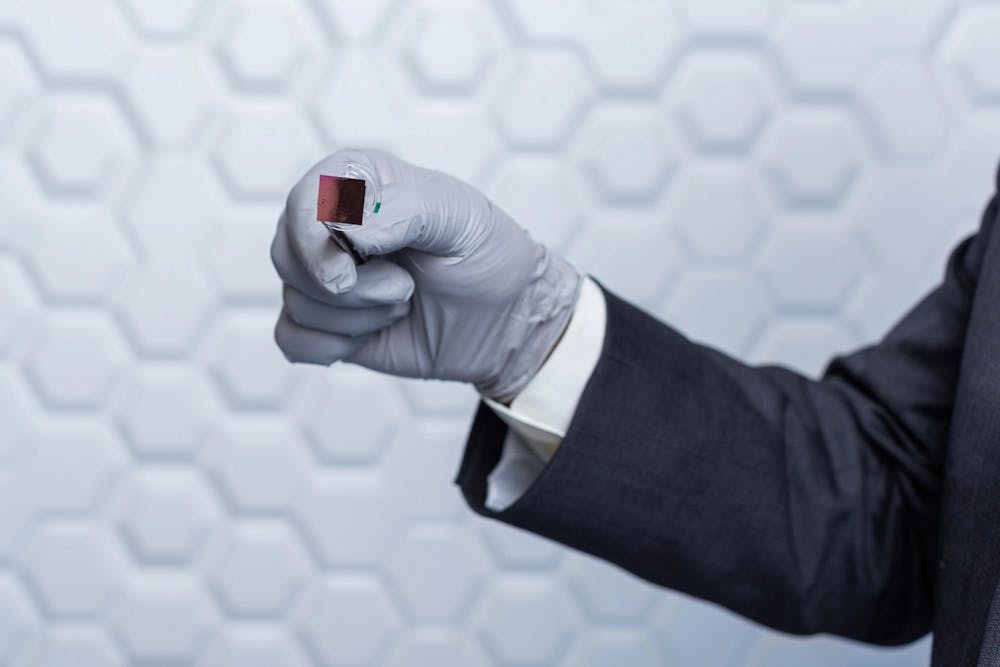IU School of Medicine researchers have developed a new technology, a silicon nanochip, that is showing promise in treating volumetric muscle loss.
The nanochip utilizes tissue nanotransfection technology, or TNT, which applies a “harmless electric spark” to injured muscle tissue when placed on the affected tissue. The spark then transports specific genes almost instantly, according to a Nov. 9 news release from IU. These genes could greatly aid in restoration of muscle function.
“In less than a second, the nanochip can deliver treatment at the injury site,” according to an article published by the Indiana Center for Regenerative Medicine and Engineering.
Related: [School of Medicine to build new medical education and research building in Indianapolis]
Clinical treatments currently use a person’s own tissue or physical therapy to treat volumetric muscle loss, which can be improved upon by the new TNT nanochip developed by IU and Purdue researchers.
Volumetric muscle loss occurs when muscle tissue is injured and fails to regenerate due to an extensive loss of mass after traumatic events or surgical removal of large muscular areas. According to an IU news release, a 20% loss of muscle mass can result in up to 90% loss of function.
A new study published in Nature Partner Journals Regenerative Medicine tested the nanochip on volumetric muscle loss in rats and was the first to report that the technology can be beneficial in generating muscle tissue.
“This work proves the potential of tissue nanotransfection in muscle tissue, opening up a new avenue of investigational pursuit that should help in addressing traumatic muscle loss,” IU researcher Dr. Chandan Sen said in a press statement.
Related: [IU affiliated startup develops VR technology to improve substance use recovery results]
More uses of TNT are also being developed. Topical uses of the technology are being evaluated for improving wound closure on the skin.
“Currently, we are exploring the use of TNT for creation of blood vessels, nerve cells and insulin producing beta islet cells,” Brent Toto, associate director of administration for the IU Center for Regenerative Medicine and Engineering, said.
Sen and other researchers will continue to develop TNT technology for multiple revolutionary uses.




